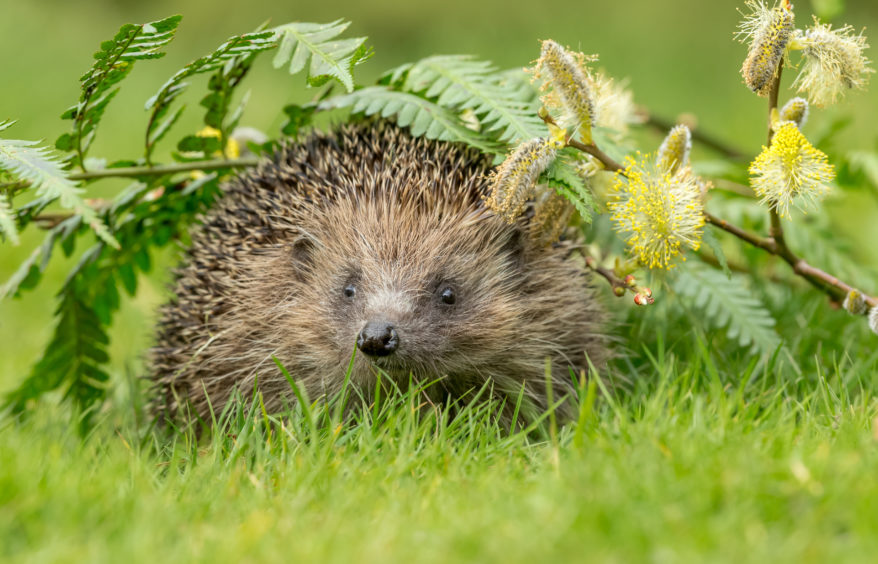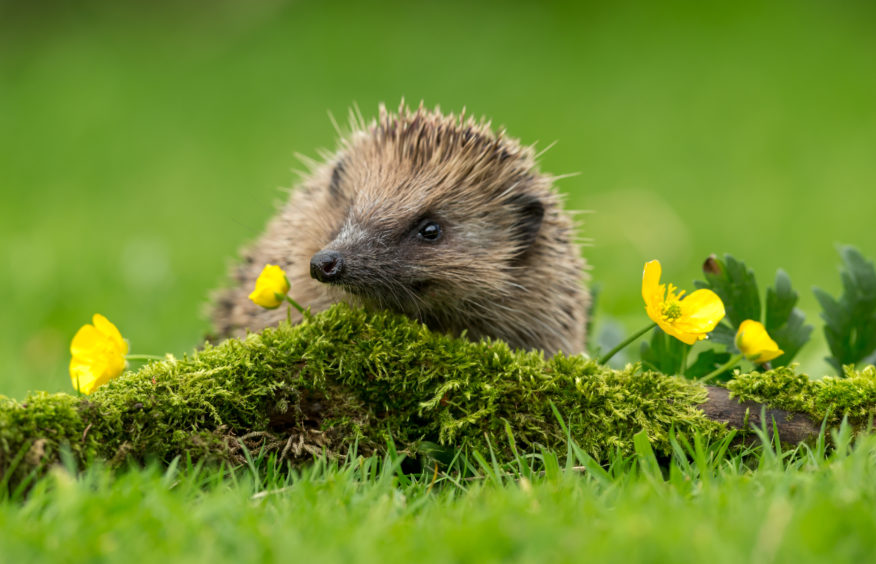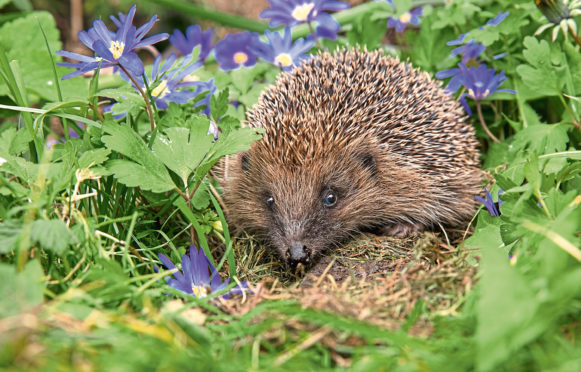A movement by the far corner of the lawn under the diminishing fade of the gloaming, so imperceptible it may easily have been a mere figment of my imagination.
But no, there it was again, a definite stirring by the margin of a beech hedge. I crept closer and the familiar rotund shape of a hedgehog soon became discernible, snuffling in the leaf litter. I kept my distance, knowing that if I ventured too close, it would curl up into a protective ball.
The hedgehog scuttled out from under the hedge and moved across the lawn at surprising speed, almost as if it were gliding under the power of some invisible force. The creature then swept under a berberis bush and was gone.
It was a fleeting glimpse, but one that had sent a shiver of excitement coursing through my body, for I rarely see hedgehogs nowadays. As a boy growing up in an Edinburgh suburb, I remember frequently finding hedgehogs in our garden and along nearby disused railway embankments. Now, it is a remarkable event to stumble upon one.
Hedgehog numbers are in freefall – plummeting by as much as 70% over the last 20 years or so, and by a similarly catastrophic amount in the previous few decades. In the 1950s there may have been as many as 35 million hedgehogs in the UK; now that figure may have dropped to as low as a million, or perhaps even less – an environmental tragedy that is happening on our very doorsteps.

There are so many cards stacked against these wonderful animals – habitat loss and fragmentation, pesticide use and road deaths to name but a few. An increase in badger populations, which prey upon hedgehogs, may also be having an impact. Even the way we design our gardens is playing a part in their demise, with pristine boundary fences forming insurmountable obstacles that make it impossible for hedgehogs to travel from garden to garden when foraging (they can wander up to two miles during the course of a night).

I returned to my garden the following evening, and the hedgehog appeared again at about the same time. A creature of habit, clearly, and as before, it glided across the lawn on pattering feet and disappeared under the berberis. The following morning, I crawled beneath the bush and spotted a small gap at the bottom of an adjacent fence, through which the animal had crawled under to access our neighbour’s garden.
That gap was a lifeline to this hedgehog, enabling it to wander far and wide in its search for food. A thought breezed through my mind. If we all ensured that there was at least one suitably sized gap under our garden fences, then that in itself would go a long way in protecting our precious hedgehogs. A world without these prickly urchins would be truly unimaginable and they need our help like never before.
INFO
Hedgehog decline is more significant in rural than urban areas, possibly because of agricultural intensification and also because rural roads have higher speed limits, resulting in more casualties.










